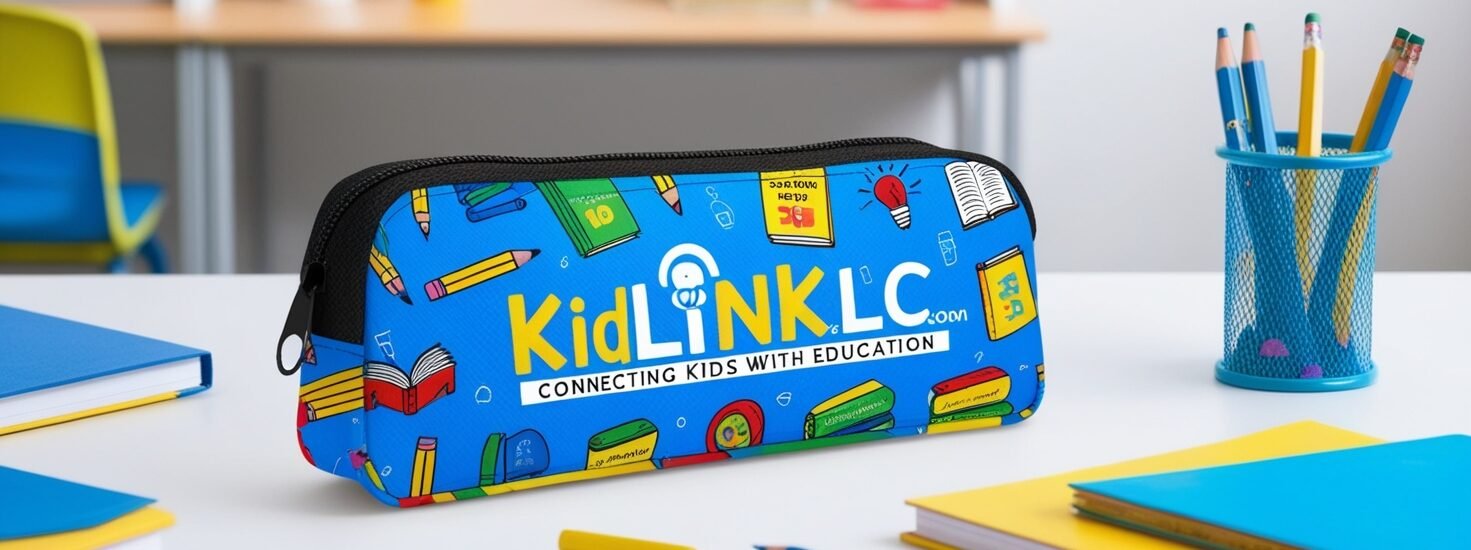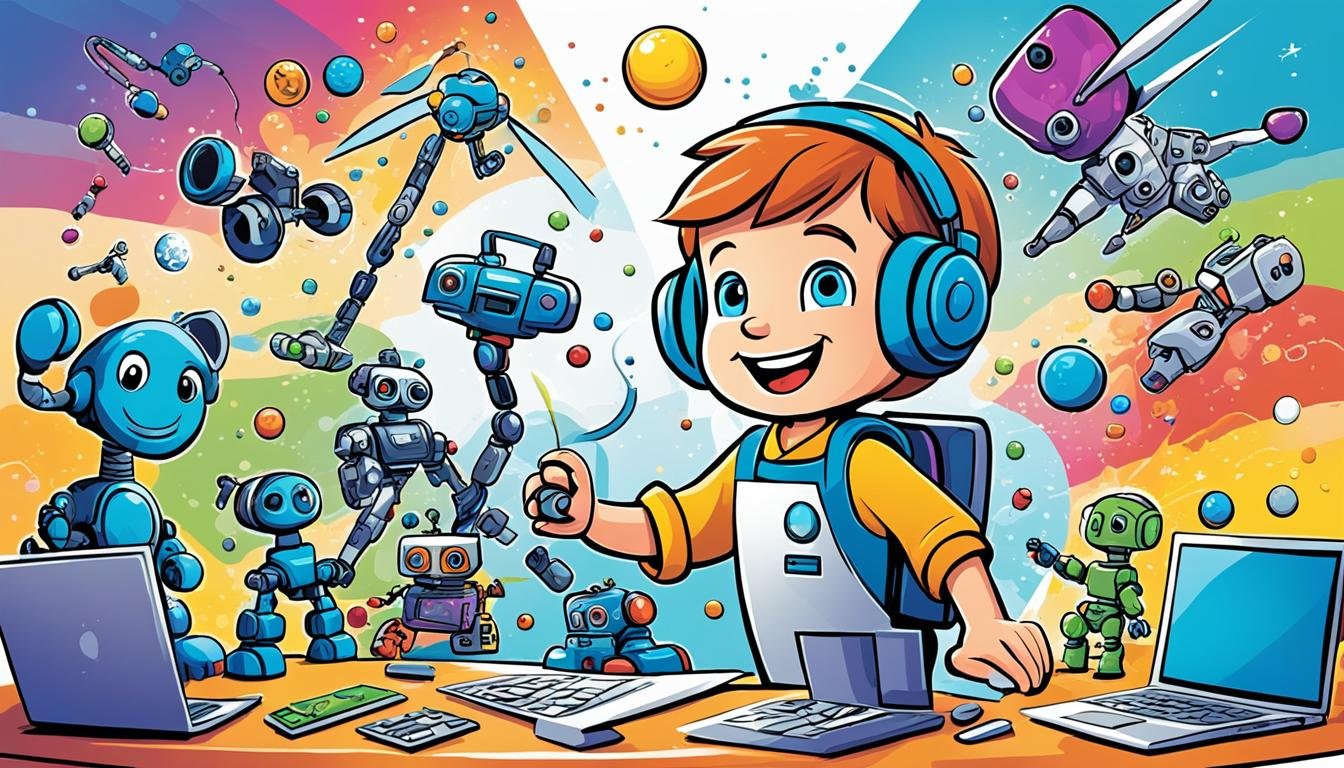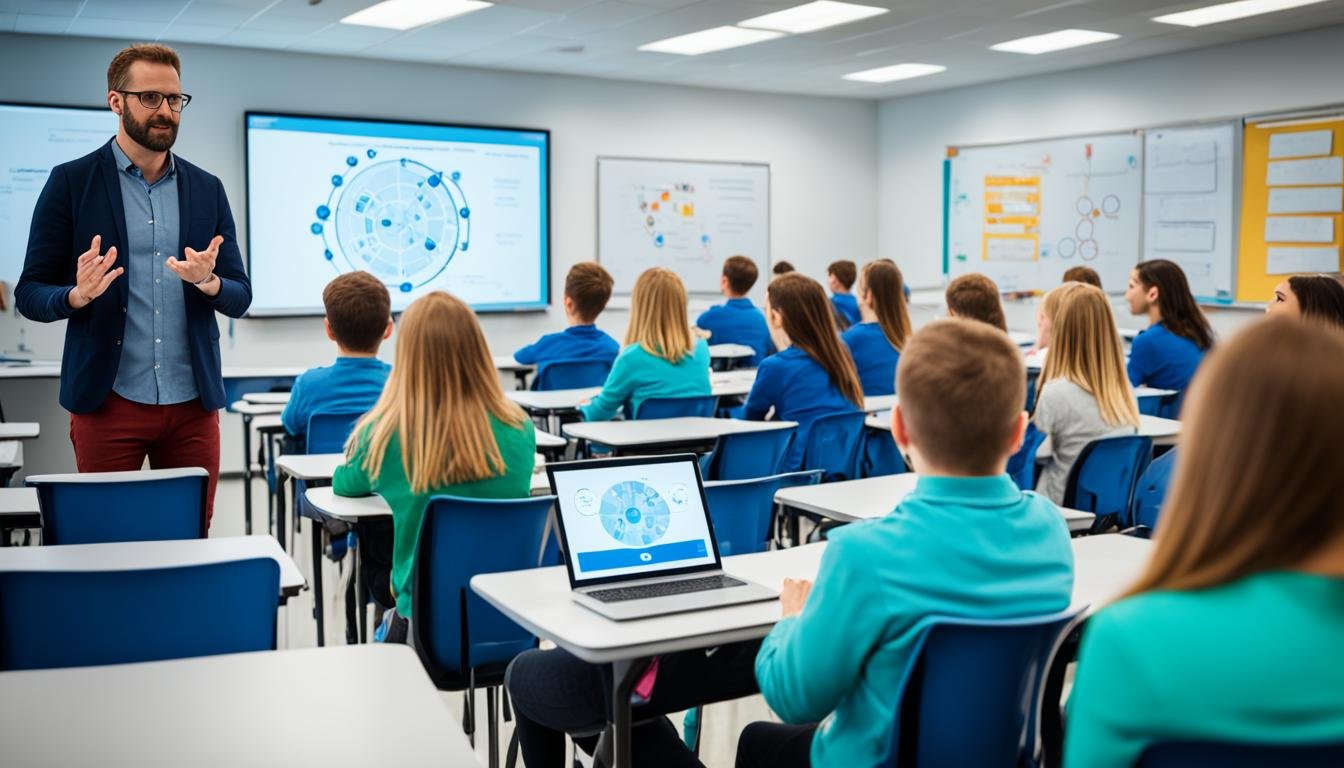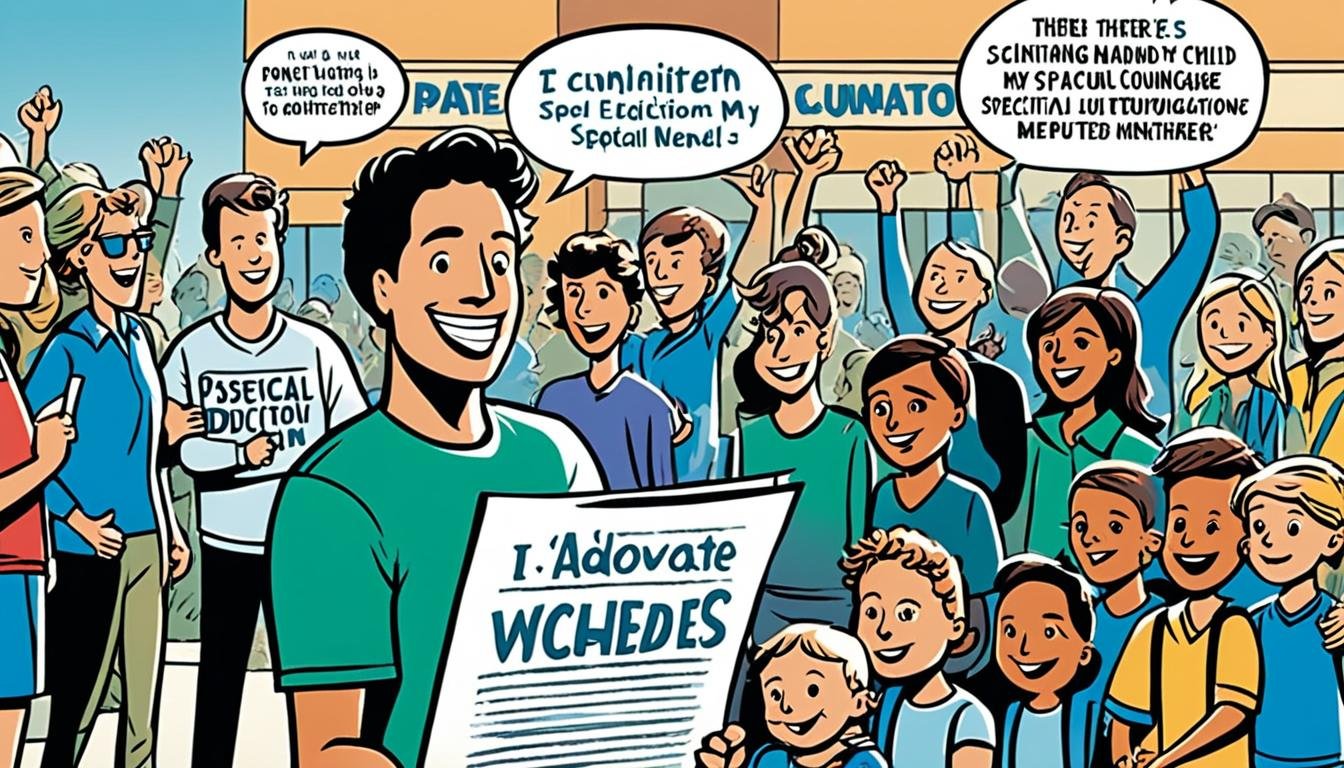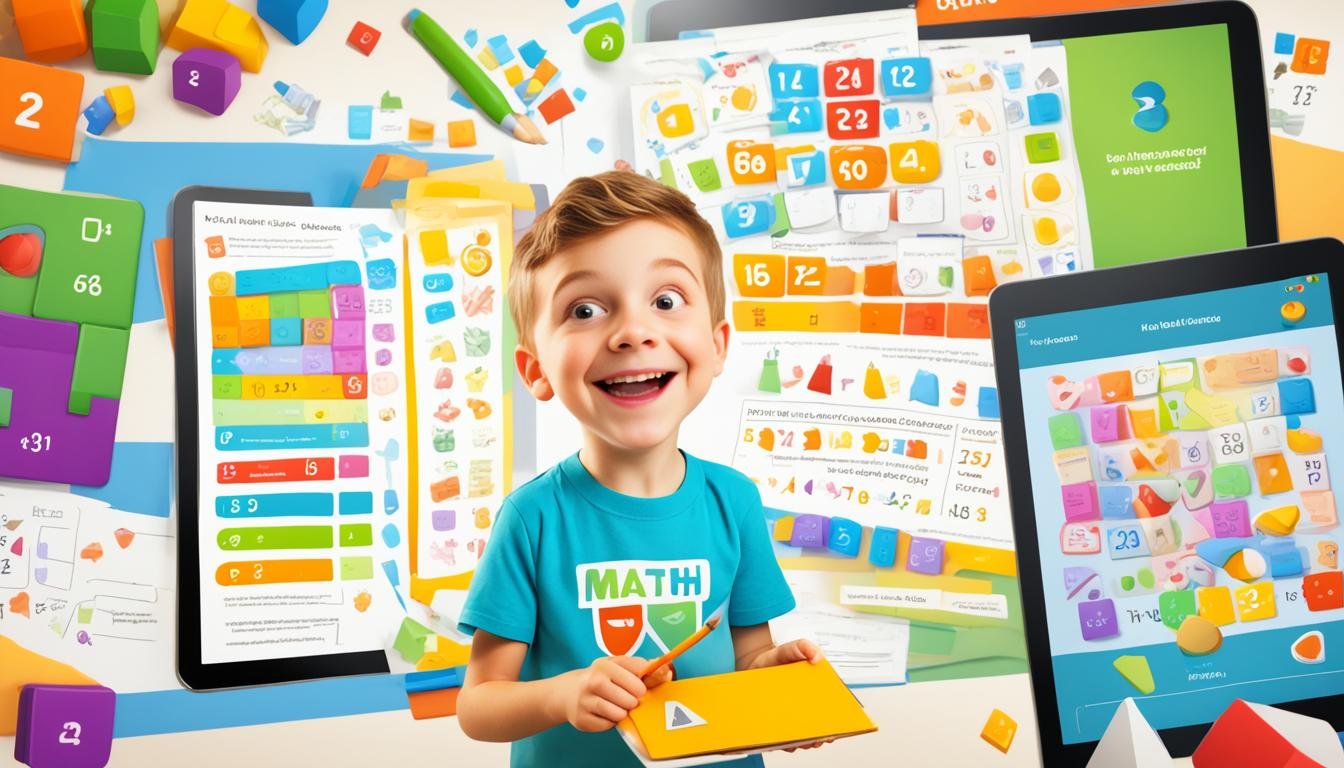What Are the Long-Term Benefits of Introducing Coding and Robotics to Young Children?
Have you ever thought about how early tech exposure can change our kids’ futures? The way we teach is changing, and knowing the perks of coding and robotics is key. As tech skills become more important, teaching kids to code early gives them more than just computer knowledge. It helps them think better, be more creative, and solve problems.
Studies show that kids who start coding do better in school and have many career options in coding later. They can look into this more here.
Key Takeaways
- Early coding helps kids think more critically.
- It prepares them for various careers with coding skills.
- Robotics education boosts creativity, letting kids innovate.
- Technology exposure helps kids become more resilient and solve problems better.
- The job market will need more tech-savvy people in the future.
Introduction to Coding and Robotics
Coding and robotics are key in today’s education for young learners. Coding lets kids write instructions for computers, helping them share ideas and solve problems. Robotics is about making machines that can do tasks, boosting creative thinking.
Starting with coding early sets a strong base for future learning. It prepares kids for a world full of technology. Adding robotics to coding lets them make their ideas real. This mix makes learning fun and vital for doing well in a digital world.
In our tech-filled times, coding and robotics are crucial for digital skills. They give kids the tools to face today’s challenges. These skills improve their creativity, adaptability, and determination. They turn into tech creators, not just users.
Understanding the Importance of Early Education in STEM
Early STEM education is key to sparking curiosity and interest in science, technology, engineering, and mathematics. It matches well with kids’ natural desire to explore. This early start builds a strong base for creative thinking and tech skills.
Studies show that starting tech education early can greatly help kids grow. Looking into this, we see that early exposure boosts important skills. It also gets kids ready for future challenges.

To show why early STEM education matters, I’ve made a table with key points:
| Benefit | Description |
|---|---|
| Enhanced Curiosity | Encourages children to ask questions and seek answers, fostering a love for learning. |
| Critical Skill Development | Promotes essential skills such as problem-solving and computational thinking. |
| Future Readiness | Prepares young learners for the fast-evolving tech landscape and job market. |
| Engagement with Real-World Problems | Links classroom learning to real-world challenges, enhancing understanding and relevance. |
STEM education lays a solid foundation for the next generation. By engaging in these activities, kids can easily move on to harder topics as they get older.
For a detailed look at how robotics and coding help in early STEM education, check out the study here.
Benefits of Coding and Robotics
Coding and robotics offer many benefits for kids. They help kids understand how technology works in the real world. These activities also boost their thinking skills.
Adding coding to school helps kids grow in many ways. It makes them smarter in technology and better at solving problems.
Real-World Applications Beyond Technology
Coding and robotics make kids think creatively. They learn to use what they know in real situations. For example, building a robot to get past obstacles teaches them to plan and adjust.
This helps them think critically and learn more about technology.
Enhancing Problem-Solving Skills
Kids get better at solving problems by doing things hands-on. Coding makes them try and improve their solutions over time. This builds their analytical skills and teaches them to keep going when things get tough.
They learn to solve problems step by step. This skill helps them in school and in life.
Developing Critical Thinking and Creativity
Coding and robotics help kids be more creative and think deeply. They design and make new things, which makes them think differently. Working with others leads to new ideas that challenge the usual ways of doing things.
This helps kids grow their minds and prepares them for success in many areas. For more on how to support these skills, visit KidLinkLC.com.
Boosting Problem-Solving Skills Through Coding
Coding is a great way to help young learners improve their problem-solving skills development. By using programming languages, kids learn to break down big problems into smaller tasks. This makes it easier for them to solve each part step by step, making learning more fun.
The Role of Coding in Problem-Solving Development
Learning to code teaches critical thinking early on. Kids start to look at situations closely, spotting problems before they get too big. This helps them see coding challenges as chances to learn more about logical thinking.
Research Findings on Problem-Solving in Young Coders
Studies show that coding helps kids think more creatively and be more resilient when solving coding problems. Early coding exposure can lead to better problem-solving skills later on. For more details on how coding affects kids’ thinking, check out this resource.

| Age Group | Coding Exposure (Hours/Week) | Problem-Solving Skills Improvement (%) |
|---|---|---|
| 5-7 years | 2 | 30 |
| 8-10 years | 4 | 50 |
| 11-13 years | 6 | 70 |
The Influence of Robotics on Teamwork and Collaboration
Robotics education boosts teamwork and collaboration among students. In group projects, I see how kids work together to solve problems. These activities improve communication and conflict resolution skills. These skills are key for both school and work life.
In robotics classes, students share their ideas and skills in projects. This teamwork setting teaches the importance of working together. It helps students respect each other’s views and find common goals.
Working on challenges, students learn the value of working together. They improve their technical skills and learn how to work well with others. This prepares them for teamwork in many areas of life.
Encouraging Computational Thinking in Children
Teaching young kids about computational thinking is key for their future learning and solving problems. This skill helps them tackle big tasks by breaking them down into smaller parts. Learning to code is a great way to develop this skill and shows many benefits in school.
Breaking Down Complex Problems
Coding lets kids take apart complex problems into simpler parts. This helps them plan and set priorities, leading to better solutions. Through coding projects, they learn to think in a structured way, which helps in many areas of life.
This kind of thinking gets them ready for school and real-life situations. It teaches them to see tasks clearly and make step-by-step plans.
Sequential Thinking and Debugging
Debugging is a big part of coding. Kids often find errors in their work, which makes them look at their steps again. This helps them think step by step, find mistakes, and fix them.
Debugging makes their coding skills stronger and teaches them to keep going when things get tough. It shows them the value of not giving up.
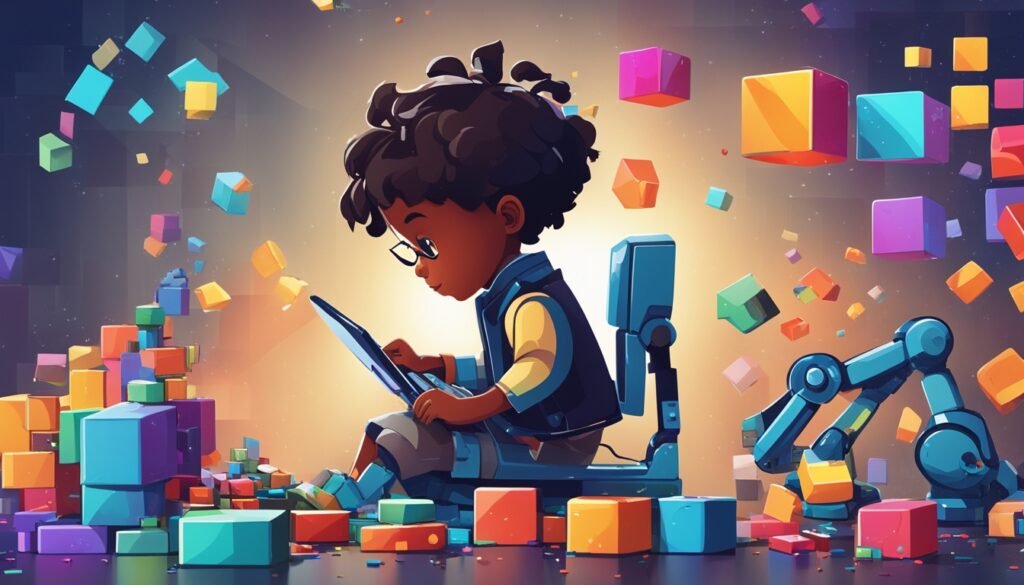
By teaching kids about computational thinking and debugging, we get them ready for a tech-filled future. Starting early with these ideas changes how they see solving problems, making them open to new ideas. For more on this topic, check out this link.
Long-Term Career Advantages from Early Coding Education
Looking at today’s job market, it’s clear that learning to code early is key. It helps kids get ready for the future. With coding skills, they can grab many career chances in coding and robotics.
Future Job Market and Career Opportunities
The job world is changing fast. More jobs need tech and programming knowledge. Early coding education gives kids the basics for many jobs.
Careers in software development, web design, and robotics are open to young coders. These skills help in regular jobs, freelancing, and even starting their own businesses.
The Importance of Tech Literacy for Future Generations
Knowing tech is a must for the future. As tech gets more complex, having coding skills is vital. It teaches kids how to solve problems in many areas.
This skill makes them adaptable in a fast-changing job market. Tech literacy also helps in other jobs, making them ready for any modern job. For more info, check out the benefits of a career in coding.
Enhancing Creativity Through Robotics Education
Robotics and coding for kids boost creativity. They learn to innovate and solve problems creatively. This hands-on learning changes traditional education, making kids think differently.
How Coding Fosters Creative Thinking
Coding lets kids express their ideas creatively. They use programming languages to make their ideas come alive. This improves their technical skills and encourages a mindset of discovery and imagination.
Writing code requires critical thinking to solve challenges. This helps kids think more imaginatively.
Encouraging Innovative Problem-Solving
Robotics challenges kids to find new solutions to real problems. They work on projects that mix design and engineering. This helps them apply what they learn to real situations.
This approach builds confidence and a positive attitude towards challenges. Kids learn they can make a difference.
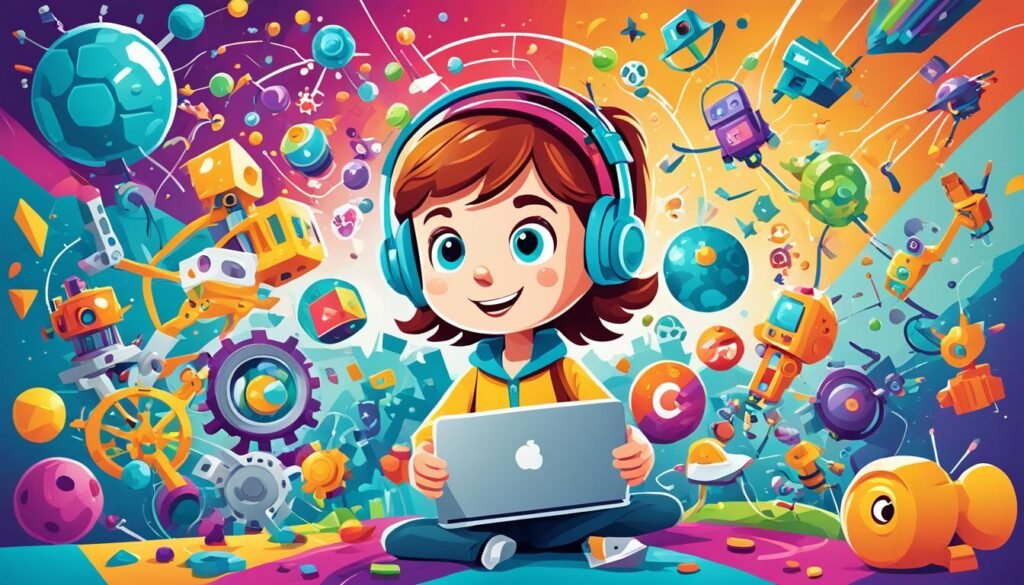
For more information, check out LearnQoch. They offer coding and STEM activities that make learning fun and effective. This is great for boosting creativity and innovation in young learners.
STEM Learning Benefits for Young Children
Introducing STEM education through coding and robotics offers many benefits for young learners. These activities help kids understand math and science better. They make learning fun and ensure kids grasp important concepts early on.
Integrating Math and Science with Coding
When kids do coding projects, they use math and science in real life. This link helps them see how abstract ideas work in the real world. By solving coding challenges, they learn important skills like critical thinking and creativity.
Hands-On Learning and Engagement
Hands-on activities keep kids interested and motivated. They see the effects of their work right away. This makes learning more meaningful and helps them try out different ways to solve problems.
Such activities highlight the value of STEM learning. They also boost teamwork and communication skills.
For more info, check out resources on the importance of robotics in STEM learning. Combining math, science, and hands-on learning prepares kids for a future filled with technology.
Building Resilience and Persistence with Coding
Teaching young kids to code is more than just about tech skills. It helps them build resilience. When they tackle coding challenges, they learn important life lessons. These lessons help them grow beyond just coding.
Overcoming obstacles becomes a way to grow and learn. This approach helps them develop a strong mindset for growth.
Developing a Growth Mindset
A growth mindset means seeing problems as chances to get better. When coding gets tough, kids learn to find ways to keep going. This mindset is key for their growth, boosting their confidence and problem-solving abilities.
It helps them see challenges as exciting opportunities for learning. This mindset supports them in school and life.
Lessons Learned from Programming Challenges
Programming challenges are tough for young coders. But overcoming them teaches kids to keep going. They learn that making mistakes is a normal part of learning.
As they fix their code and improve their projects, they discover their strengths and weaknesses. This process builds resilience and adaptability. These are key skills for any future challenge.

The Impact of Technological Literacy on Future Education
Technological literacy is key in today’s education. It helps students understand and use technology better. This makes learning easier and more fun.
Students who know technology do well in school. They think better, work together better, and are more creative. This is because they’re good with digital tools.
Knowing technology also helps students in the future. It makes them stand out when looking for jobs. Being tech-savvy opens doors to many career paths.
Schools are now teaching technology more. This means students learn new ways to learn and teach. They get ready for the jobs of tomorrow.
| Aspect | Benefits |
|---|---|
| Academic Performance | Enhanced critical thinking, better problem-solving skills |
| Engagement | Increased interest in learning, higher participation rates |
| Job Readiness | Preparation for tech-driven careers, competitive workforce skills |
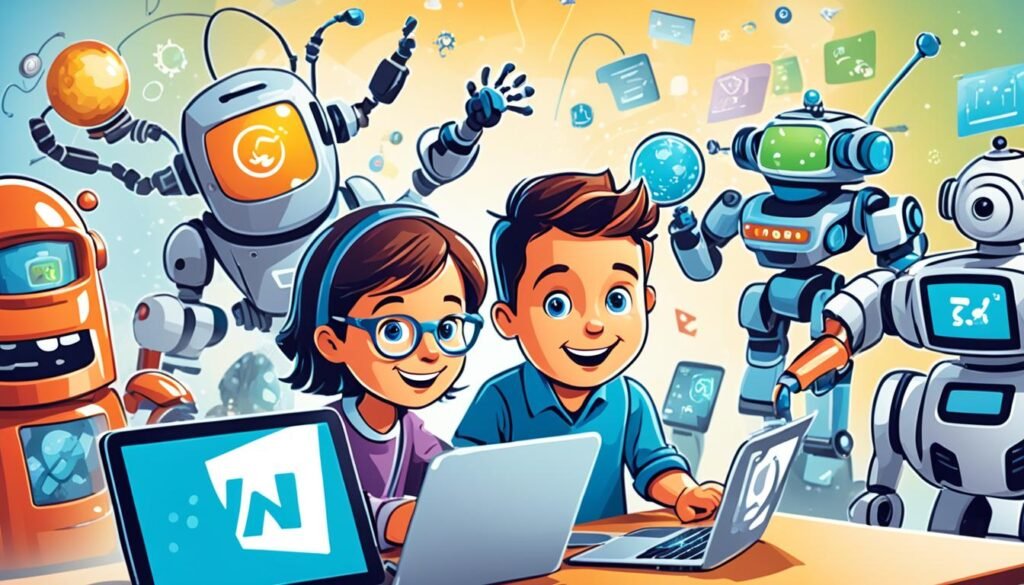
Robotics as a Tool for Critical Thinking Development
Robotics helps kids use what they learn in real situations. This hands-on way of learning makes it stick better. It also helps them think critically.
By working with robots, students get better at solving problems. They improve their analytical skills too.
Applying Theory to Practice in Robotics
Robotics helps students connect theory with real-world actions. It’s a place where they can try things out and see what they learn. They face challenges that make them think and try different solutions.
This kind of learning is great for developing a curious and exploring mindset.
Fostering a Positive Attitude Toward STEM Learning
Robotics makes STEM subjects fun and meaningful. Kids learn to keep going when things get tough. They see that hard work pays off.
Working with robots makes kids more excited about STEM. It also prepares them for more learning in the future. For more on how robotics sparks interest in coding, check out this article on programming and coding robots for kids.
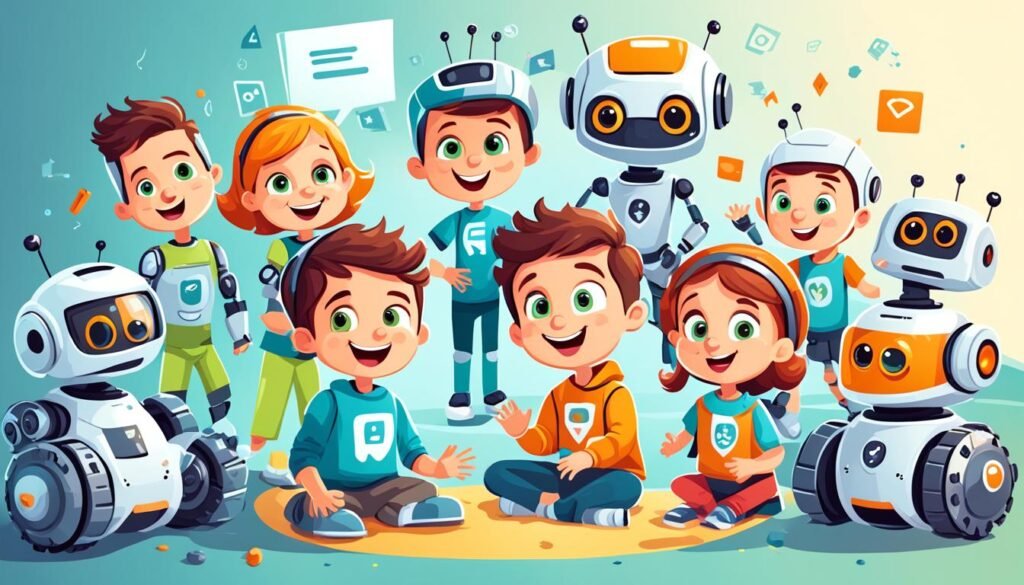
How Parents and Educators Can Support Coding Initiatives
Parents and teachers are key in sparking kids’ interest in coding. Starting coding early lays a strong base for future learning. There are many tools and resources out there to help young learners.
Encouraging Early Exposure to Coding Tools
Introducing coding tools early can spark kids’ interest and build important skills. Sites like Scratch, Code.org, and Tynker let kids dive into coding. These platforms make coding fun and boost thinking and problem-solving skills.
Resources for Parents to Facilitate Learning
There are many resources for parents to help kids learn coding at home. Online courses and tutorials guide parents through coding basics. Sites like Codecademy and Udemy have courses for different ages and skills. Books like “Hello Ruby” and “Python for Kids” let parents learn coding with their kids.
| Resource Type | Examples | Benefits |
|---|---|---|
| Online Platforms | Scratch, Code.org, Tynker | Interactive learning experiences, fosters creativity |
| Online Courses | Codecademy, Udemy | Structured learning path, diverse topics |
| Books | Hello Ruby, Python for Kids | Introduces concepts through storytelling, encourages family engagement |
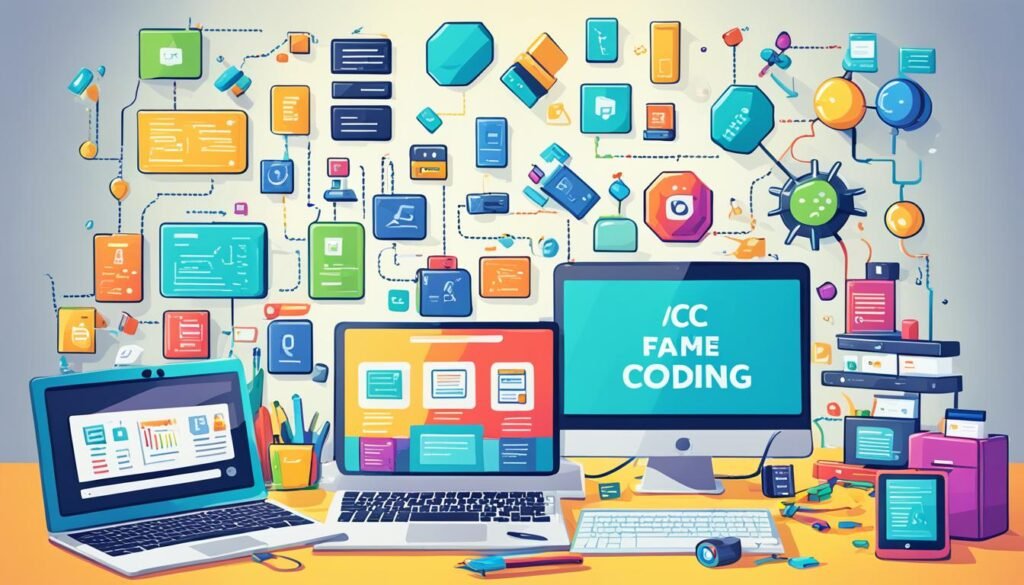
Future Considerations for Coding and Robotics in Education
Coding and robotics are becoming key parts of education. They offer many technology learning perks that help students grow. It’s vital to focus on hands-on learning to meet the tech world’s needs.
Schools need to be flexible to use new tools and resources. This way, they can meet students’ changing needs and keep up with tech advances. By focusing on coding and robotics, schools get students ready for today’s jobs and tomorrow’s opportunities.

Here’s a table that shows how traditional learning compares to learning with coding and robotics:
| Learning Approach | Traditional Methods | Coding and Robotics Methods |
|---|---|---|
| Engagement Level | Passive learning | Active participation |
| Skill Development | Basic skill acquisition | Critical thinking and creativity |
| Real-World Application | Theoretical knowledge | Practical problem-solving |
| Future Readiness | Limited | Enhanced readiness for tech careers |
The future of education depends on coding and robotics. Adding these subjects makes learning richer and prepares students for tomorrow’s jobs. As educators and schools adapt, students gain from the skills coding and robotics offer.
Conclusion
Teaching coding and robotics to young kids has many benefits today. It helps them learn important skills like solving problems, thinking critically, and being creative. These skills are key for doing well in school and getting ready for the future in technology.
Learning to code and work with robots helps kids build a strong base of knowledge. It also makes them more confident and resilient. They learn to work together with others, which is vital for their future jobs. This early start in technology prepares them to keep up with changes in the job market.
Choosing to teach coding is a smart move for the future. It sets the stage for success in many areas of life. For more on how coding and robotics can change the game for kids, check out the benefits of coding and robotics education for kids.
